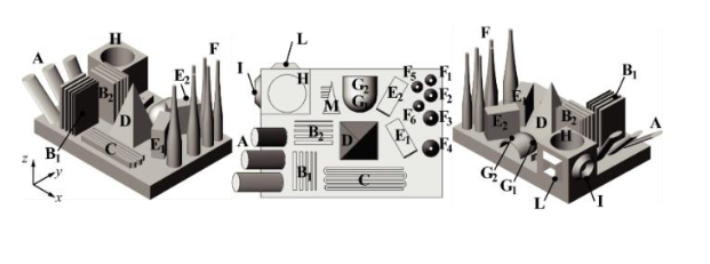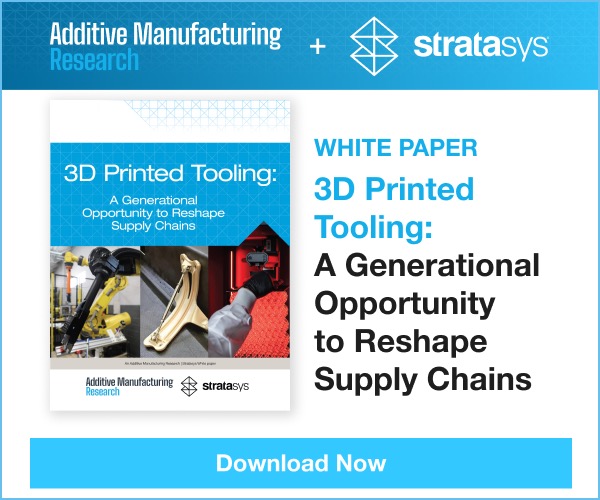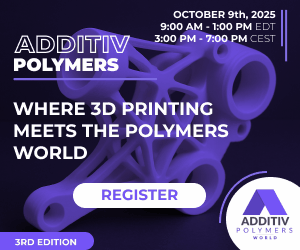In ‘A methodology for evaluating the aesthetic quality of 3D printed parts,’ the authors delve more deeply into the aesthetics of 3D printing, and why they are important. The overall goal of their study is to evaluate defects and point out what is most commonly found—and expected—aesthetically.

(a) Overheating effect (b) Gaps between contours and infill and gap into infill line (c) Stringing (d) Layer separation (e) Skipped layer; (f) Whiskers (g) Gaps in thin walls; (h) Blobs and zits (i) Ringing [26-28].
- Overheating—when a new layer is added while the other has not yet cooled off
- Gaps—occurring between contour areas and infill
- Stringing—when strings of filament lag behind during printing
- Layer—low printing temperatures cause degradation to layers
- Skipped layers—due to mechanical issues with hardware
- Whiskers—wisps left behind on overhangs when layers are not properly supported
- Blobs and zits—due to excesses of material built up near starting or end points of the layer
- Ringing—wavy lines on the printed object
Reference parts are used, but here without the use of supports.
“For the two most common materials in 3D printing, which are ABS and PLA, 14 g and 17 g are respectively needed for the fabrication of one replica of the reference part. The artefact has a rectangular base that is 5 mm thick to prevent deformation after separation from the building platform,” state the authors.

Reference parts produced by means of Makerbot Replicator (a), Stratasys Dimension Elite (b) and 3ntr A4 (c)
Thus, the part must be 3D printed using the orientation wherein the largest flat surface of the base lays on the printer bed and the Z axis is aligned to the build direction of layer deposition. Evaluation reference of parts is usually predicated on three things: Aesthetical (A), purely Technical (T) and Technical and Aesthetical (TA).
“The assessment methodology is based on the definition of a unique composite indicator that can be used to summarize the aesthetical quality of a 3D printed part. The composite indicator is obtained by combining a set of underlying indicators and it is employed for the comparison and ranking of different 3D printing machines,” state the researchers. “However, since the use of a composite indicator results in a loss of information, the underlying indicators must be used to draw proper conclusions about the causes of 3D printing defects in the artefact replicas.”
All this methodology is supported through benchmarking, examining one replica of the reference part that was created on three separate printers. In this case, the models used were:
Processing and slicing occur on models from the same .stl files, but on different slicers and with different parameters set.
“After fabrication, each replica was then evaluated by one tester,” stated the researchers.
Replicas were measured via AQI, resulting in the following Replicator evaluation:
“Replicator produced a part with no gaps between adjacent infill lines and thus the machine appears to extrude the right amount of plastic to correctly infill the sections with the largest area (E1, E2, H, and M). On the contrary, overheating effect (OH) and stringing effect (STR) are noticed during the infill of smaller sections (D and F) due to a slow retraction of the filament with respect to the speed at which the extruder jumps from one section to another in the same layer.”
The Stratasys Dimension Elite evaluation:
“Stratasys Dimension Elite achieved the lowest score for the NOSUP bridge because the building of the feature shows the presence of support structures. In fact, the proprietary software of the Stratasys machine does not allow to disable the creation of supports within the build settings. The absence of stringing (STR), overheating (OH), ringing (RIN) and blob (BL) effects demonstrates the high level of industrialization of the Dimension Elite from the point of view of mechanical and control systems. However, the GACI indicator achieved only a medium evaluation because gaps are visible between adjacent lines into the infill area and the number of gaps seems to be a function of the orientation of the features.”
The 3ntr A4 printer:
“3ntr A4 printer reached the lowest score as far as the blob effect (BL) is concerned. This excess of material can be explained by an incorrect flow rate that leads to prime an unnecessary amount of PLA, which is left on the part surface during the stationary retraction of the filament. This conclusion is confirmed by the high score of the STR indicator, because the stringing effect is absent due to the accurate filament retraction.”
Overall, the Replicator demonstrated the best aesthetic quality with an AQI of 14. The 3ntr A4 printer had an AQI of 12, and the Stratasys Dimension Elite, with an AQI of 11. The researchers state that there is an expanded investigation ongoing within this study regarding other 3D printers too, along with adding more testers for benchmarking.
“Beside aesthetics, additional underlying pure technical indicators will be considered to account for other quantitative aspects, like the minimum thickness of infill, that affect the quality of 3D printed parts,” concluded the researchers. “Finally, the STL model of the artefact can be downloaded for free from the open-source GrabCad library, so the described methodology can be easily replicated by the scientific community to extend this research to a wider range of 3D printers. “To many subscribers around the world it may seem that as almost as soon as we began worshipping the miracles of 3D printing, we began tearing the technology down repeatedly with a constant assault on aesthetics—and ultimately, common defects.
While 3D printing has been around since the 80s, much progress has been made in the past few years as it has burst into the mainstream, engaging the DIY crowd, students and teachers, designers, engineers, artists—and organizations like NASA and the U.S. Army. Research and analysis have grown into a large area of study, however, as researchers, users, and industry leaders want to create high-performance products that may be not only be unique, but function better than those fabricated via conventional technology.
What do you think of this news? Let us know your thoughts! Join the discussion of this and other 3D printing topics at 3DPrintBoard.com.
[Source / Images: A methodology for evaluating the aesthetic quality of 3D printed parts]Subscribe to Our Email Newsletter
Stay up-to-date on all the latest news from the 3D printing industry and receive information and offers from third party vendors.
Print Services
Upload your 3D Models and get them printed quickly and efficiently.
You May Also Like
Nikon Advanced Manufacturing Partners with the US Navy for the Maritime Industrial Base
Following the recent announcement that Velo3D has partnered with the US Navy for the Maritime Industrial Base (MIB), now Nikon Advanced Manufacturing is doing the same. One Nikon SLM Solutions...
3DPOD 270: Hamid Zarringhalam, CEO Nikon Advanced Manufacturing
Hamid Zarringhalam rose through the ranks of Nikon‘s precision manufacturing unit. He’s now a Corporate Vice President at Nikon and the CEO of Nikon Advanced Manufacturing and Nikon Ventures. We’re...
3D Printing News Briefs, July 23, 2025: ASTM Standard, Defense, Bioinks, & More
We’re starting with business news in today’s 3D Printing News Briefs, as Nikon AM Synergy has appointed a new CEO. Moving on, a proposed ASTM International standard will support 3D...
From Concept to Reality: Nikon AM CEO Hamid Zarringhalam on Executing a Metal 3D Printing Strategy
There are countless metrics you can use, whether quantitative or qualitative, to judge the success of an organization. One of the most important may simply be the organization’s ability to...

































